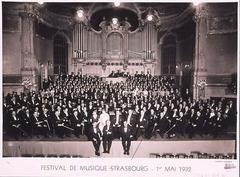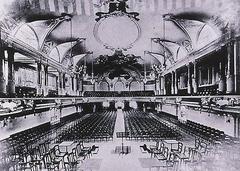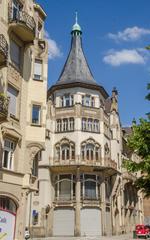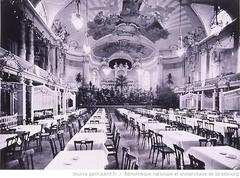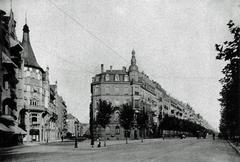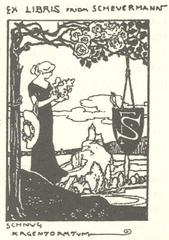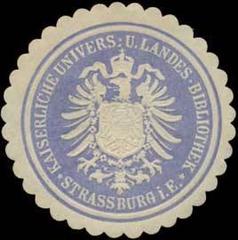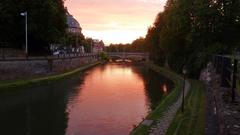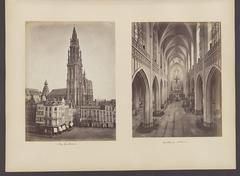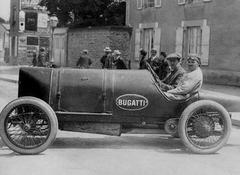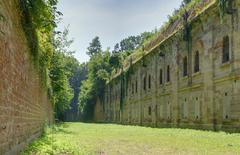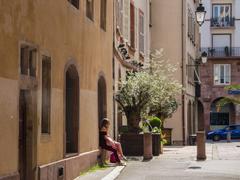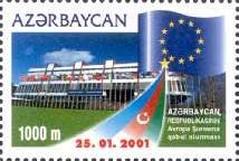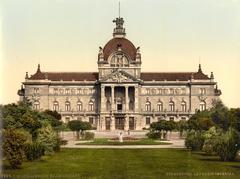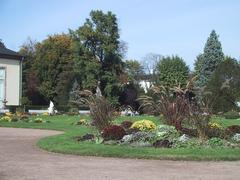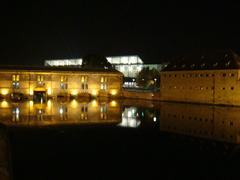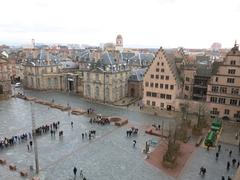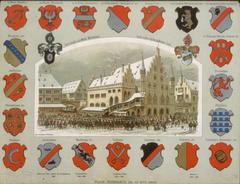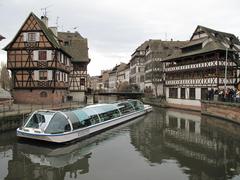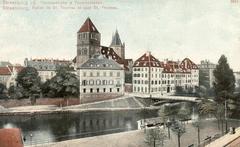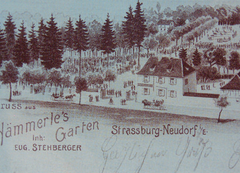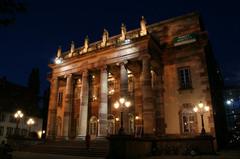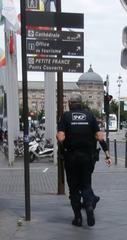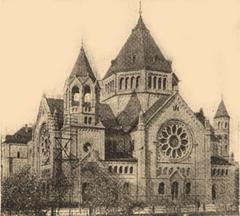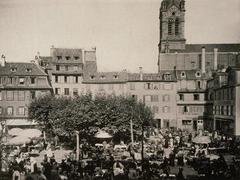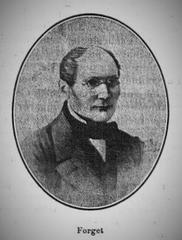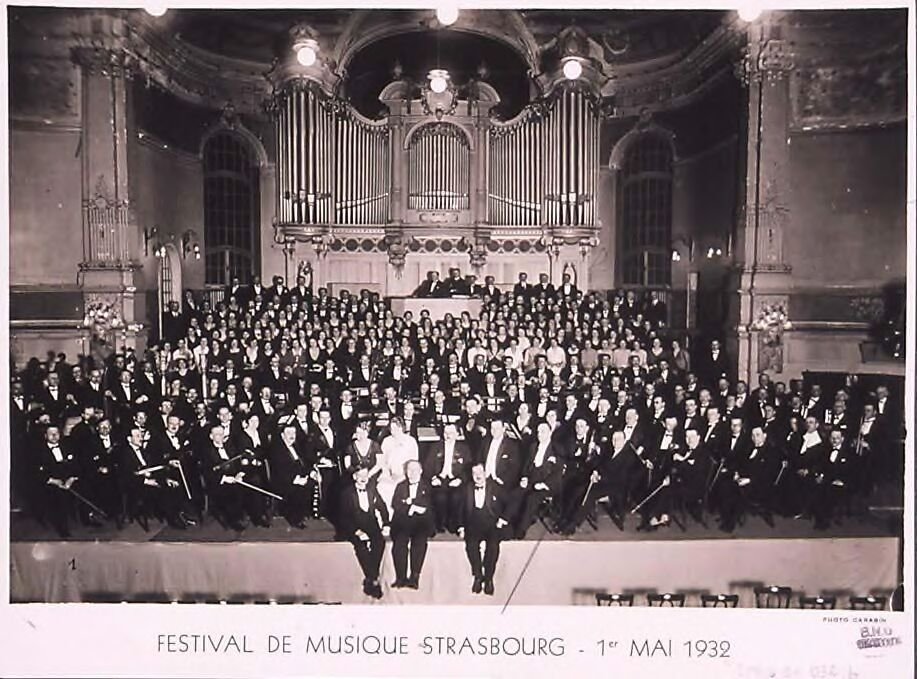
Palais Des Fêtes Visiting Hours, Tickets, and Historical Significance
Date: 17/08/2024
Introduction
The Palais des Fêtes in Strasbourg, France, is a renowned cultural and historical landmark that has captivated visitors for over a century. Initially constructed between 1901 and 1903 while Strasbourg was part of the German Empire, this architectural marvel was designed by Joseph Müller and Richard Kuder. The building, originally known as the Sängerhaus, showcases a unique blend of Neo-Gothic, Neo-Renaissance, and Art Nouveau styles, making it one of the earliest examples of Art Nouveau in Strasbourg (Wikipedia). Over the years, the Palais des Fêtes has played a pivotal role in the city’s cultural landscape, hosting numerous prestigious events and performances. It served as the principal concert hall for the Orchestre philharmonique de Strasbourg until 1975, witnessing performances by legendary conductors such as Gustav Mahler and Richard Strauss (Wikiwand). Today, the Palais des Fêtes continues to be a hub for cultural activities, thanks to extensive renovations and the efforts of local cultural groups. This guide aims to provide a comprehensive overview of the Palais des Fêtes, covering its rich history, architectural significance, visitor information, and future prospects, ensuring that you have all the details needed for a memorable visit.
Table of Contents
- Introduction
- History
- Architectural Significance
- Cultural Significance
- Visitor Information
- Recent Developments
- Future Prospects
- Conclusion
- FAQ
History
Historical Significance
The Palais des Fêtes, originally known as the Sängerhaus, was constructed between 1901 and 1903 when Strasbourg was part of the German Empire. The building was commissioned by the Straßburger Männer Gesangverein, a prominent male choral society founded in 1872. The architectural design was a collaboration between Joseph Müller and Richard Kuder, who opted for an eclectic mix of styles, including Neo-Gothic, Neo-Renaissance, and Art Nouveau. This blend of architectural styles makes the Palais des Fêtes one of the earliest examples of Art Nouveau in Strasbourg (Wikipedia).
The building was inaugurated on January 31, 1903, and quickly became a cultural hub for the city. It served as the principal concert hall of Strasbourg until 1975, hosting numerous prestigious events and performances. The venue was home to the Orchestre philharmonique de Strasbourg and saw performances by renowned conductors such as Gustav Mahler, Richard Strauss, and Charles Munch (Wikiwand).
Architectural Significance
The Palais des Fêtes stands out not only for its historical importance but also for its architectural innovation. It was one of the first buildings in Strasbourg to utilize reinforced concrete, a technique that was relatively new at the time. The main auditorium, with a seating capacity of 1,300, features a lavish Neo-Baroque style, while the exterior showcases a mix of Neo-Gothic and Neo-Renaissance elements. The building also includes Art Nouveau windows and a balcony, making it a unique architectural landmark (Strasbourg.eu).
Cultural Significance
The Palais des Fêtes has played a crucial role in the cultural life of Strasbourg. After World War I, the building was renamed “Palais des Fêtes” and became city property in 1922. It continued to serve as the main concert hall until the opening of the Palais de la Musique et des Congrès in 1975. Despite a period of decline in the late 20th century, the building was added to the Inventaire Supplémentaire des Monuments Historiques in 2007, recognizing its cultural and historical value (Palais des Fêtes).
The venue has hosted a wide range of events, from grand symphonies to local choral performances. It has been a platform for both international stars and local talents, contributing significantly to the city’s rich musical heritage. The building also houses a historic pipe organ, installed in 1909, which is currently undergoing restoration (Wikipedia).
Visitor Information
For visitors, the Palais des Fêtes offers a unique blend of historical and cultural experiences. Located at the corner of rue Sellénick and rue de Phalsbourg, the building is easily accessible by public transport, with bus stops nearby. The venue can accommodate up to 1,700 people, making it suitable for large-scale events as well as more intimate performances (Strasbourg.eu).
Visiting Hours and Tickets
- Visiting Hours: The Palais des Fêtes is generally open to the public during events and special tours. For specific visiting hours, it is advisable to check the official website or contact the venue directly.
- Tickets: Tickets for events at the Palais des Fêtes can be purchased online through various ticketing platforms or at the venue’s box office. Prices vary depending on the event and seating options.
Travel Tips
- Accessibility: The building is equipped with facilities to accommodate visitors with disabilities. It is recommended to inform the venue in advance to ensure a smooth visit.
- Nearby Attractions: The Palais des Fêtes is located near several other historical sites and attractions in Strasbourg, making it an ideal stop on a cultural tour of the city.
Recent Developments
In recent years, the Palais des Fêtes has undergone extensive renovations to restore its former glory. The renovation project, which began in 2011 and concluded in 2020, included the refurbishment of the main concert hall and the city dance center. Although the organ has not yet been reassembled, the building is now fully operational and continues to host a variety of cultural events (Strasbourg.eu).
In 2021, a group of volunteers and cultural players formed the Collectif Palais des Fêtes to further promote and organize cultural events at the venue. This initiative aims to revitalize the Palais des Fêtes and re-establish it as a central hub for Strasbourg’s cultural life. The collective organized a festival in June 2023 to celebrate the 120th anniversary of the building, marking a new chapter in its storied history (Wikipedia).
Future Prospects
The future of the Palais des Fêtes looks promising, thanks to ongoing efforts to preserve and promote this historic venue. The Collectif Palais des Fêtes continues to organize events and activities aimed at engaging the local community and attracting visitors from around the world. With its rich history, architectural beauty, and cultural significance, the Palais des Fêtes remains a vital part of Strasbourg’s cultural landscape (Palais des Fêtes).
Conclusion
In summary, the Palais des Fêtes is not just a concert hall; it is a testament to Strasbourg’s rich cultural heritage and architectural innovation. Its significance extends beyond its historical roots, serving as a vibrant cultural hub that continues to enrich the lives of both locals and visitors alike. Plan your visit today and experience the unique charm of this iconic venue.
FAQ
What are the visiting hours for Palais des Fêtes?
The Palais des Fêtes is generally open to the public during events and special tours. For specific visiting hours, it is advisable to check the official website or contact the venue directly.
How much are tickets for Palais des Fêtes?
Tickets for events at the Palais des Fêtes can be purchased online through various ticketing platforms or at the venue’s box office. Prices vary depending on the event and seating options.
Are there guided tours available?
Guided tours are occasionally available and can be arranged through the venue. It is best to check the official website for more information.
Is the Palais des Fêtes accessible for visitors with disabilities?
Yes, the building is equipped with facilities to accommodate visitors with disabilities. It is recommended to inform the venue in advance to ensure a smooth visit.
References
- Palais des Fêtes, 2023, Wikipedia (Wikipedia)
- Palais des Fêtes, 2023, Wikiwand (Wikiwand)
- Palais des Fêtes, 2023, Strasbourg.eu (Strasbourg.eu)
- Palais des Fêtes, 2023, Palais des Fêtes official website (Palais des Fêtes)
- Best Time to Visit Strasbourg, 2023, TripSavvy (TripSavvy)
- We Call It Flamenco, 2023, StayHappening (StayHappening)
